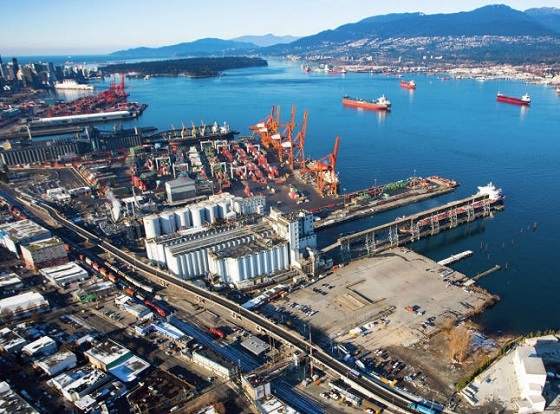National
Trudeau’s Christmas Gifts to Canadians: Unaffordable Housing, Inaccessible Health Care, Out-of-Control Immigration and Sagging Productivity
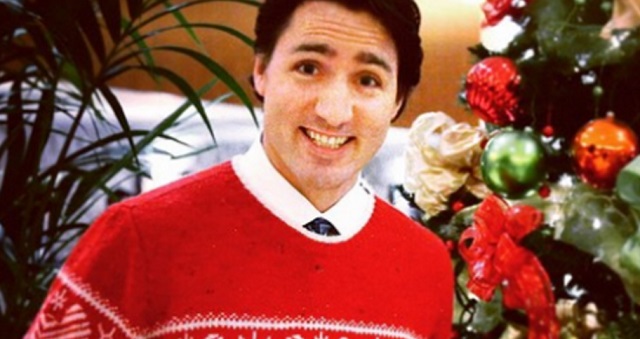
Justice
A Justice System That Hates Punishment Can’t Protect the Innocent

Five judges decided that child exploitation isn’t worth a year in prison
What the hell is going on in Canada?
Quebec (Attorney General) v. Senneville – SCC Cases
This isn’t a legal debate. This isn’t a constitutional nuance. This is a collapse. A collapse of morality, of justice, of basic human decency.
This week, the Supreme Court of Canada ruled—by a 5-4 vote—that handing a child pornographer a one-year prison sentence is cruel and unusual punishment. Yes, really. According to the highest court in the land, asking a man who hoarded videos of children—actual children—being raped… to serve twelve months behind bars… is too much to ask. It’s excessive. It’s unfair.
ARE YOU HEARING THIS?!!!!?!!!!?
Let’s talk about the two men at the center of this decision. Not hypotheticals. Not academic theories. Real men. Real crimes. Real victims.
Louis-Pier Senneville—a former soldier, no less—pleaded guilty to possessing over 470 files, 90 percent of which featured young girls aged 3 to 6. Think about that. Three years old. These weren’t gray-area images. These were children, babies, being sodomized, penetrated, used like objects. And he didn’t stumble across them—he looked for them, on specialized sites, and kept them for over a year.
Mathieu Naud? He went even further. 531 images, 274 videos, kids aged 5 to 10. Anal, vaginal, oral rape. These are things no human being should even have to read about—let alone sit in front of a computer and download, categorize, and distribute. Which he did. For months. With software designed to erase his tracks.
This isn’t some “first-time slip-up.” This is deliberate, targeted, depraved behavior. And now?
90 days.
9 to 11 months.
That’s the punishment.
That’s what the Canadian justice system thinks these crimes are worth.
Because five justices decided that asking a pedophile to spend one year in prison might be too harsh for a hypothetical offender. Not these offenders. Not the ones with troves of abuse files saved on hard drives. No… some imaginary guy who maybe clicked the wrong link.
This is what liberalism does to a justice system. It corrupts it beyond repair. It starts with empathy for criminals, and ends with judges protecting predators from consequences. Because in the upside-down world of progressive legal theory, the offender is always the victim. And the actual victims—the kids in those videos—are reduced to footnotes. Inconvenient collateral damage.
This decision—this revolting, disgraceful ruling—is not some fluke. It’s not an isolated misfire by a rogue court. It is the natural conclusion of a liberal worldview that refuses to see evil for what it is. A worldview that sees punishment as outdated, that sees moral judgment as offensive, and that sees child predators as victims of circumstance who just need counseling and compassion.
You want to know what happens when you erase right and wrong?
When your leaders worship “inclusivity” more than innocence?
When your courts protect predators more than children?
This happens.
Five judges decided that a man hoarding child rape videos should be treated with mercy.
Not the children in the videos—no. Not the parents whose lives were shattered.
Not the society that expects its institutions to defend the weak and punish the wicked.
No, mercy for the predator. ALWAYS FOR THE PREDATOR!!!
And now these men—Senneville and Naud—will be out walking the streets. Free men. Maybe shopping next to you at the grocery store. Maybe living near a school. Because Canada’s highest court decided that a year in prison was just too mean.
This isn’t policy failure. This is moral treason.
It’s going to take more than reform to fix this. It’s going to take an entirely new political order—one that puts children before criminals, justice before hypotheticals, and truth before ideology.
Until then, this isn’t a justice system.
It’s a disgrace.
And every decent person in Canada should be outraged.
Subscribe to The Opposition with Dan Knight .
For the full experience, upgrade your subscription.
Aristotle Foundation
B.C. government laid groundwork for turning private property into Aboriginal land
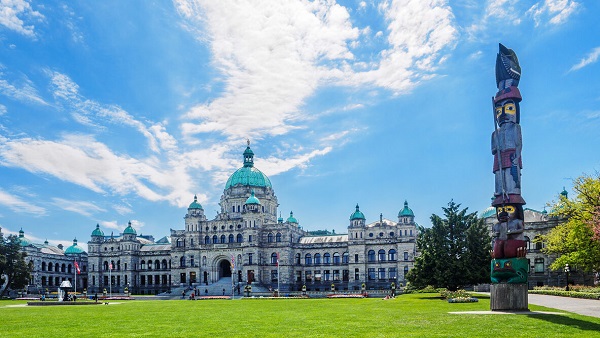
It claims to oppose the Cowichan decision that threatens private property, but it’s been working against property owners for years
A City of Richmond letter to property owners in the Cowichan Aboriginal title area recognized by the B.C. Supreme Court has brought the judgment’s potential impacts into stark reality.
“For those whose property is in the area outlined in black,” the letter explained, “the Court has declared Aboriginal title to your property which may compromise the status and validity of your ownership.”
While Premier David Eby has been quick to disavow the decision, the reality is his government helped set the stage for it in multiple ways. Worse, it quietly supported a similar outcome in a related case, even after the concerning implications of the Cowichan judgment were well-known.
The problematic nature of the Cowichan decision has been well-established. It marks the first time a court has declared Aboriginal title over private property in B.C., and declares certain fee simple land titles (i.e., private property) in the area “defective and invalid.”
Understandably, the letter raised alarm bells not only for directly-affected property owners, but also for British Columbians generally, who recognize that the court’s findings in Richmond may well be replicated in other areas of the province in the future.
As constitutional law professor Dwight Newman pointed out in August, if past fee simple grants in areas of Aboriginal title claims are inherently invalid, “then the judgment has a much broader implication that any privately owned lands in B.C. may be subject to being overridden by Aboriginal title.”
In response to media questions about the City of Richmond’s letter, Eby re-stated his previous commitment to appeal the decision, saying, “I want the court to look in the eyes … of the people who will be directly affected by this decision, and understand the impact on certainty for business, for prosperity and for our negotiations with Indigenous people.”
While the words were the right ones, his government helped lay the groundwork for this decision in at least three ways.
First, the province set the policy precedent for the recognition of Aboriginal title over private property with its controversial Haida agreement in 2024. The legislation implementing the agreement was specifically referenced by the plaintiffs in the Cowichan case, and the judge agreed that it illustrated how Aboriginal title and fee simple can “coexist.”
Eby called the Haida agreement a “template” for other areas of B.C., despite the fact that it raised a number of democratic red flags, as well as legal concerns about private property rights and the constraints it places on the ability of future governments to act in the public interest.
While the agreement contains assurances that private property will be honoured by the Haida Nation, private property interests and the implementation of Aboriginal title are ultimately at odds. As Aboriginal law experts Thomas Isaac and Mackenzie Hayden explained in 2024, “The rights in land which flow from both a fee simple interest and Aboriginal title interest … include exclusive rights to use, occupy and manage lands. The two interests are fundamentally irreconcilable over the same piece of land.”
Second, the provincial and federal lawyers involved in the Cowichan proceedings were constrained by the government in terms of the arguments they were allowed to make to protect private property. In August, legal expert Robin Junger wrote, “One of the most important issues in this case was whether Aboriginal title was ‘extinguished’ when the private ownership was created over the lands by the government in the 1800s.”
The Cowichan judgment expressly notes that B.C. and Canada did not argue extinguishment. In B.C.’s case, this was due to civil litigation directives issued by Eby when he was attorney general.
Finally, provincial legislation implementing the United Nations Declaration on the Rights of Indigenous Peoples (UNDRIP) also played a role in supporting the judge’s conclusions, a point Newman wrote about in August. “They’re used in support of (even if not as the main argument for) the idea that Aboriginal title could yet take priority over current private property rights,”
In addition to setting the stage for the Cowichan decision, and despite their stated concerns with that judgment, the B.C. government has actively sought judicial recognition of Aboriginal title over private property elsewhere.
The overlaying of Aboriginal title over private property with the Haida agreement was already problematic enough prior to the Cowichan decision. However, even after the serious implications of the Cowichan decision were clear, the provincial and federal governments quietly went before the B.C. Supreme Court in support of a consent order that would judicially recognize the Aboriginal title over the entirety of Haida Gwaii.
The successful application had the effect of constitutionally entrenching Aboriginal title for the Haida Nation, including over private property, with the explicitly stated goal of making it near-impossible for future democratically elected governments to amend the agreement.
The reality is, the B.C. government claims to oppose the Cowichan decision even as it laid the groundwork for it, and it has actively pursued similar outcomes on Haida Gwaii. Repeated claims of seeking certainty and protecting private property have been belied by this government’s actions again and again.
Caroline Elliott, PhD, is a senior fellow with the Aristotle Foundation for Public Policy and sits on the board of B.C.’s Public Land Use Society.
-
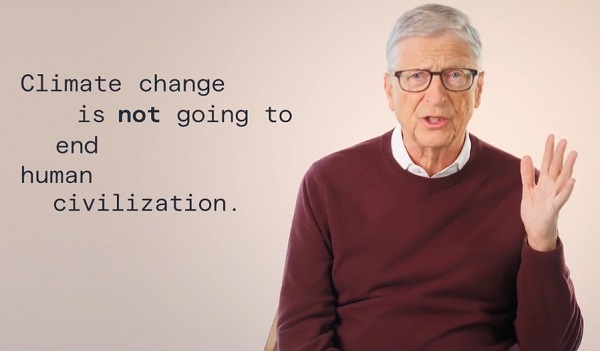
 Environment14 hours ago
Environment14 hours agoThe era of Climate Change Alarmism is over
-

 Business20 hours ago
Business20 hours agoYou Won’t Believe What Canada’s Embassy in Brazil Has Been Up To
-

 Agriculture2 days ago
Agriculture2 days agoCloned foods are coming to a grocer near you
-

 International2 days ago
International2 days agoSagrada Familia Basilica in Barcelona is now tallest church in the world
-

 Aristotle Foundation6 hours ago
Aristotle Foundation6 hours agoB.C. government laid groundwork for turning private property into Aboriginal land
-
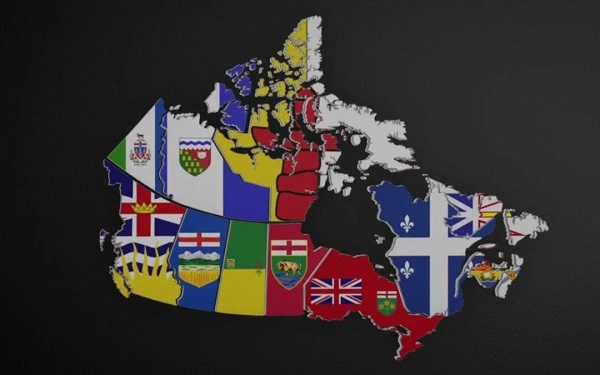
 Fraser Institute2 days ago
Fraser Institute2 days agoOttawa continues to infringe in areas of provincial jurisdiction
-

 Alberta2 days ago
Alberta2 days agoGondek’s exit as mayor marks a turning point for Calgary
-

 Automotive20 hours ago
Automotive20 hours agoCarney’s Budget Risks Another Costly EV Bet
 1.1 million per year, nearly 450,000 in the last quarter alone: The Justin Trudeau government vows to continue inviting new immigrants at record rates, allegedly to fill shortages of skilled workers, yet private-sector job creation in Canada is lagging, and many immigrants appear to go straight into government work. (Sources of photos: (top) Diary Marif; (middle)
1.1 million per year, nearly 450,000 in the last quarter alone: The Justin Trudeau government vows to continue inviting new immigrants at record rates, allegedly to fill shortages of skilled workers, yet private-sector job creation in Canada is lagging, and many immigrants appear to go straight into government work. (Sources of photos: (top) Diary Marif; (middle)  While housing starts hit all-time records in 2021 and 2022, the new construction was subsumed beneath Canada’s surging population; the national housing shortfall is growing every year and projected to reach 3-4 million units by 2030. (Source of graph:
While housing starts hit all-time records in 2021 and 2022, the new construction was subsumed beneath Canada’s surging population; the national housing shortfall is growing every year and projected to reach 3-4 million units by 2030. (Source of graph:  “We’re seeing governments leave patients for dead”: According to Colin Craig (left), president of public policy research organization Second Street, the catastrophic state of Canada’s health care is likely responsible for over 30,000 preventable deaths-while-waiting per year. (Sources of photos: (middle) The Canadian Press/Nathan Denette; (right) Shutterstock)
“We’re seeing governments leave patients for dead”: According to Colin Craig (left), president of public policy research organization Second Street, the catastrophic state of Canada’s health care is likely responsible for over 30,000 preventable deaths-while-waiting per year. (Sources of photos: (middle) The Canadian Press/Nathan Denette; (right) Shutterstock) Down and down: While Canada’s aggregate gross domestic product (GDP) continues to expand weakly, the metric that really counts – real GDP per individual Canadian – has been plunging and is projected to keep falling, signalling a weakening standard of living. (Sources: (photo) Pexels; (graph)
Down and down: While Canada’s aggregate gross domestic product (GDP) continues to expand weakly, the metric that really counts – real GDP per individual Canadian – has been plunging and is projected to keep falling, signalling a weakening standard of living. (Sources: (photo) Pexels; (graph)  No longer a gap, a chasm: Canada’s invested capital per worker, once comparable to that of the U.S., has fallen dramatically since the Trudeau Liberals came to office in 2015. Says the C.D. Howe Institute: “Businesses see less opportunity in Canada and [this] prefigures weaker earnings and living standards.” (Sources: (photo) The Canadian Press/Paul Chiasson; (graph)
No longer a gap, a chasm: Canada’s invested capital per worker, once comparable to that of the U.S., has fallen dramatically since the Trudeau Liberals came to office in 2015. Says the C.D. Howe Institute: “Businesses see less opportunity in Canada and [this] prefigures weaker earnings and living standards.” (Sources: (photo) The Canadian Press/Paul Chiasson; (graph) 




